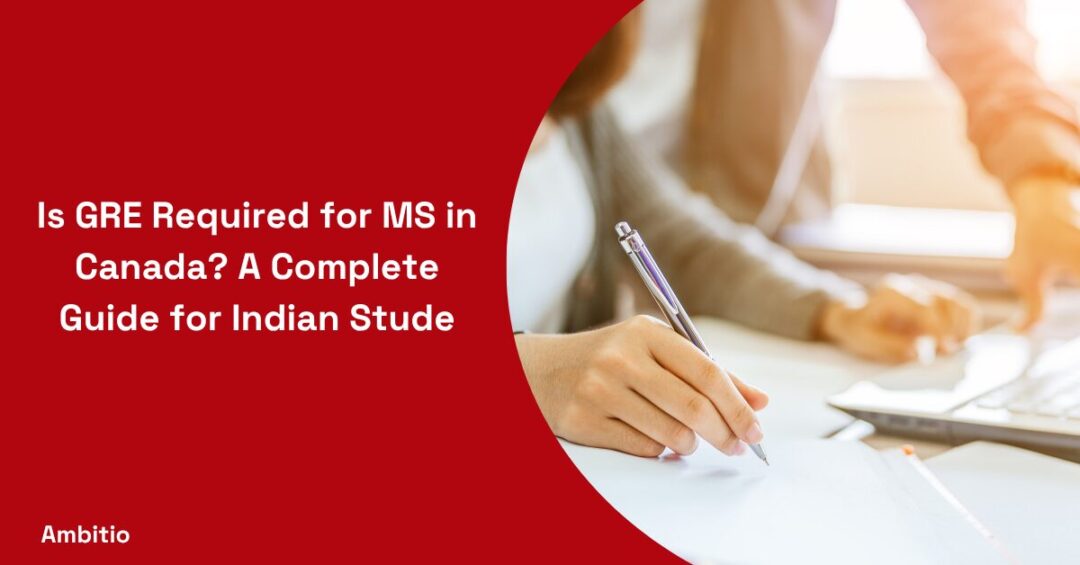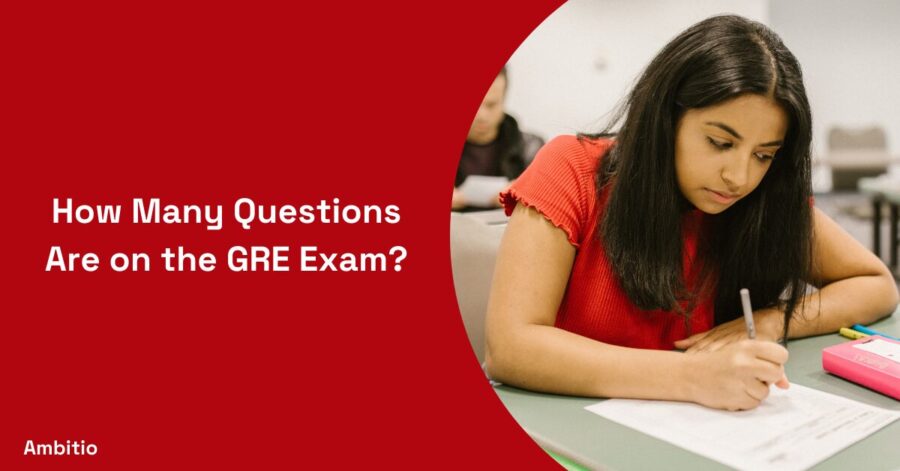17 September 2025
5 minutes read
6 Proven Strategies To Solve GRE Probability Questions (Free GRE Practice Questions)

Key Takeaways
- Mastering GRE probability questions starts with understanding basic concepts and key formulas.
- Visual aids like Venn diagrams simplify complex problems and conditional probability.
- Regular practice with GRE resources boosts confidence and problem-solving skills.
You know, my grandfather used to ask me, when I was just 9, “If you toss a coin three times, what are the chances of getting all heads?” I wondered for years why adults seemed obsessed with these tiny problems, until I realized, they were training me for the GRE Math I would eventually face. GRE quant can feel like a minefield, especially probability questions. You sit there staring at a “mutually exclusive” scenario, counting the number of outcomes, and suddenly, 10 minutes vanish without a clue.
Most students waste time plugging numbers randomly or memorising formulas without understanding the logic. You don’t need to memorise every trick in the book, you need strategies that actually work under pressure.
That’s exactly what this guide offers: six proven ways to tackle GRE probability questions efficiently, sharpen your GRE prep, and dominate the GRE test without losing your sanity.
What Is Probability In The GRE Exam?
Probability, at its core, is a way to describe uncertainty and the possible outcomes of an event. In the GRE exam, probability questions often appear as part of the Quantitative reasoning section. These GRE questions challenge you to calculate the probability of an event occurring, like determining the probability of getting heads when flipping a coin or the probability of drawing a red card from a deck of 52 cards.

To solve for the probability of an event, you need to understand the basic probability formula: Probability = (Number of favorable outcomes) / (Total number of possible outcomes). Whether it’s the probability of rolling a certain number on a fair die, the probability of selecting two matching items, or understanding how two events interact (like events A and B), mastering these key formulas is essential for tackling GRE probability problems.
Many probability questions can take the form of permutations, combinations, or even conditional probability, and GRE students will often encounter two to three probability questions on test day.
How Much Does Probability Weigh In The GRE Exam?
Probability questions typically account for about 10-15% of the GRE Quantitative questions, translating to around two to three questions on test day. While they may not dominate the exam, understanding probability concepts like conditional probability, GRE permutations, and combinations is crucial for a competitive score. Proper preparation through practice tests is essential to tackle these questions effectively.
6 Proven Strategies To Solve GRE Probability Questions
In my personal experience, I have encountered many students who find GRE probability questions tricky, not because they’re hard to understand, but because they lack the right approach. The key to mastering these questions is breaking them down with the right GRE prep that simplify complex problems.
Here are six proven strategies to help you solve GRE probability questions effectively:
1. Understand The Basics First
Before diving into complex probability questions, make sure you understand the basic concepts like the probability of an event, possible outcomes of an experiment, and the total number of possible outcomes. Review key formulas, like the probability = favorable outcomes / total outcomes, to build a strong foundation.
2. Visualize Using Diagrams
For complex probability questions, tools like Venn diagrams can help break down the problem. Use these visuals to better understand how two events interact or overlap, which makes it easier to determine the probability of the event happening.
3. Pay Attention To Conditional Probability
Many Graduate Record Examination questions involve conditional probability, where you’re asked to calculate the probability of an event given that another event has already occurred. Focus on understanding how to adjust the total number of possible outcomes based on the conditions provided in the question.
4. Use Permutations And Combinations
In probability questions that involve arranging or selecting items (like the probability of picking 2 items out of a sample), knowing when to use permutations or combinations is key. Practice these concepts using GRE Books, GRE tests and free GRE practice problems to become comfortable applying them.
5. Break Down Complex Problems
When faced with a complex probability problem, break it into smaller parts. For example, if you’re calculating the probability of two events (A and B) happening, first determine the probability of event A, then the probability of event B, and finally combine them.
6. Practice, Practice, Practice
The more you practice, the better you’ll get at recognizing patterns and applying the right strategies. Work through as many probability questions as you can, from official practice tests to free GRE practice resources online, and focus on questions that require you to calculate the probability of multiple events or outcomes.
5 GRE Practice Questions Of Probability
You just don’t need a strategy or expert tips from GRE instructors—you need hands-on practice. That’s the only way to truly master GRE probability problems. Below are five GRE probability practice questions that will help you apply the strategies and concepts we discussed earlier. These questions will challenge you to think critically and use key probability rules on test day.
1. Basic Probability:
You roll a fair six-sided die. What’s the probability of rolling an even number?
- Solution: The possible outcomes of rolling the die are {1, 2, 3, 4, 5, 6}. The favorable outcomes (even numbers) are {2, 4, 6}.
- Answer: Probability = 3/6 = 1/2.
2. Conditional Probability:
A deck of 52 cards is shuffled, and one card is drawn. What is the probability of drawing a red card, given that the card is a face card (Jack, Queen, or King)?
- Solution: There are 6 face cards that are red (3 in hearts, 3 in diamonds) out of the 12 total face cards.
- Answer: Probability = 6/12 = 1/2.
3. Multiple Events:
You flip two fair coins. What is the probability of getting exactly one head?
- Solution: The possible outcomes when flipping two coins are {HH, HT, TH, TT}. Only two of these outcomes have exactly one head (HT, TH).
- Answer: Probability = 2/4 = 1/2.
4. Permutations and Combinations:
In how many ways can 2 students be selected from a group of 5, and what is the probability that a specific student is chosen?
- Solution: The number of ways to select 2 students from 5 is calculated using combinations: 5C2 = (5 × 4) / (2 × 1) = 10. If you want a specific student to be chosen, they can be paired with 4 others.
- Answer: Probability = 4/10 = 2/5.
5. Complex Probability:
A jar contains 3 red marbles, 4 blue marbles, and 5 green marbles. If two marbles are drawn at random without replacement, what is the probability that both marbles are blue?
- Solution: The total number of marbles is 12. The probability of drawing the first blue marble is 4/12. After one blue marble is drawn, the probability of drawing another blue marble is 3/11.
- Answer: Probability = (4/12) × (3/11) = 1/11.
Conclusion
Look, the more you practice, the more you’ll start recognizing patterns and feeling confident in your approach. Probability questions may seem intimidating at first, but with consistent practice and the right strategies, they become just another part of the GRE puzzle you can solve with ease.
To wrap things up, mastering GRE probability questions isn’t about memorizing formulas or relying solely on shortcuts; it’s about truly understanding how probability works and applying that knowledge under time pressure. By building a solid foundation, visualizing problems with diagrams, and breaking down complex questions, you can turn probability from a stumbling block into a strength.
Achieve your highest GRE score and unlock a world of graduate school opportunities with Ambitio. Our comprehensive preparation platform offers personalized strategies, detailed study materials, and full-length practice tests, all designed to enhance your skills across the GRE’s quantitative questions and verbal sections.
FAQs
What types of probability questions are on the GRE?
Expect multiple-choice, quantitative comparison, and numeric entry questions, typically around 2-3 per test.
What key concepts should I know for GRE probability?
Understand basic probability principles, combinations, permutations, sample spaces, and independent vs. dependent events.
What strategies can I use for probability questions?
Use Venn diagrams, look for hidden information, and practice real-world scenarios to enhance understanding.
How important is practice for GRE probability?
Practice is crucial for building confidence and familiarity with various question types, especially those of medium to high difficulty.
What common mistakes should I avoid?
Avoid misinterpreting questions, overlooking outcomes, and applying incorrect formulas. Time management is also key.
How can I improve my GRE quantitative score through probability?
Mastering probability can enhance your analytical skills, benefiting your performance in other quantitative areas as well.

You can study at top universities worldwide!
Get expert tips and tricks to get into top universities with a free expert session.
Book Your Free 30-Minute Session Now! Book a call now




























